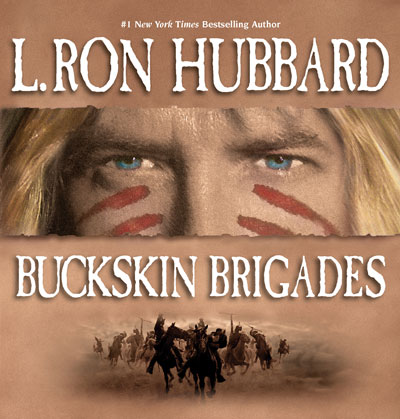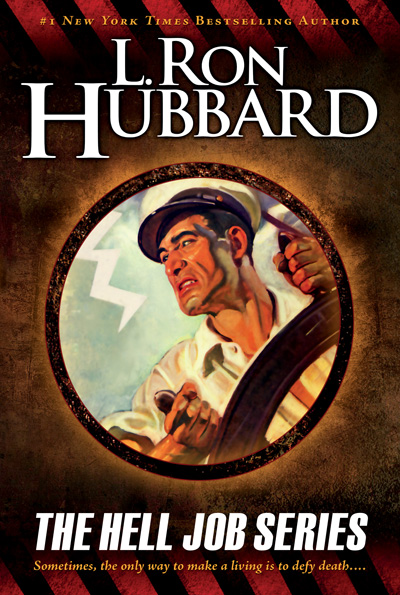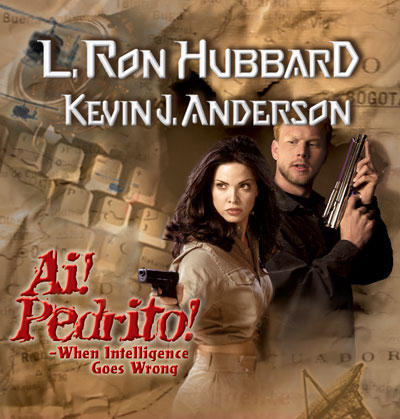Typewriter in the Sky Glossary
abaft: toward the stern (back) of a ship.
abeam: at right angles to a ship.
account: 1. See on account of 2. See turn it to account.
advice boat: a vessel used to carry dispatches (important messages) or to gather information, for example, about another ship’s position.
almirante: Spanish for admiral.
Anthony Adverse: Hervey Allen’s fictional biography of orphan Anthony Adverse, so named because his father disowned him upon learning he was not his birth father.
appetite over dixie: into a state of complete destruction or chaos. This informal expression is one of many variants which probably came from a somewhat more offensive version ass over head. Various words have been used in this expression to make it less offensive or more humorous (for example appetite rather than ass, probably because they start with the same letter). This expression was used literally by riverboat men on the Missouri to refer to someone who had fallen so as to end up upside down. A dixie is a metal cup, plate or pot used by the British during WW I and II.
aquarter: blowing on the quarter, the general area from the middle of a vessel to the stern (back of the ship). The wind blowing on the quarter was a favorable wind for sailing.
Armada: the Spanish Armada, a fleet of 130 ships sent by Philip II of Spain to invade England in 1588. It was defeated by the English fleet and further battered by storms.
auto-da-fé: an execution of a heretic by the Spanish Inquisition, especially by burning them at the stake. Auto-da-fé is Portuguese for “act of faith.”
bagatelle: something unimportant and easy to do.
bank: a row of weapons such as cannons.
bark: a sailing ship with three to five masts.
base ring: a band of metal around a cannon’s breech (back part).
basilisk: a sixteenth-century heavy cannon, usually on wheels and made of brass.
bastinado: a stick or short club.
battery: all the guns or heavy artillery on a warship.
battlement: a wall with a regular pattern of openings used for defense.
BCP: British Communist Party.
Belgian alcohol machine gun: a fictitious version of a Belgian M249, a fully automatic machine gun that fires a continuous stream of bullets that are fed into it from a long clip. It has a cooling apparatus using air, and is gas operated.
binnacle: a low chest, usually in front of the ship’s wheel, containing two compasses under glass with a compartment for a lamp between them.
blind me: a British expression of amusement or surprise, from “God blind me.”
bloody flag: a red flag displayed to show the intention of going into battle.
bosh: nonsense.
bow chaser: a gun in the bow (front) of a warship to fire at another vessel while chasing it.
bowsprit, head under the: the suspension of a severed head off the bowsprit, a pole projecting from the bow (front) of a ship, normally for supporting a sail.
brace about: turn around.
braces: ropes that secure spars (poles that support sails and rigging) and sails on a square-rigged ship.
breeching: a rope used to fasten a cannon’s breech (back part) to the side of a ship to control its recoil when it is fired.
Brethren of the Coast: a loose fraternity of pirates and privateers (commissioned private traders) commonly known as buccaneers, active in the seventeenth and eighteenth centuries in the Atlantic Ocean, Caribbean Sea and Gulf of Mexico. See buccaneer.
Brethren, the: See Brethren of the Coast.
brigand: a bandit or pirate.
Brimstone Hill: a seventeenth- and eighteenth-century military fortress, designed by the British and built by African slave labor. It was known as “The Gibraltar of the West Indies” for its great height and the fact that it seemed impossible to penetrate.
brindle bull: short for brindle bull terrier. A bull terrier is a strong muscular dog, originally bred for fighting. Brindle refers to the brown and black coloring some bull terriers have.
briny, the: the sea.
broached to: veered out of control, bringing the side of the ship to meet the wind and sea, a potentially hazardous situation.
broadside: 1. the discharge of all guns on one side of a ship. 2. with the side of a ship facing the enemy.
brush, take the: to capture the fox in a hunt and be given its brush (tail) as a prize, a feat accomplished by only the most able rider.
buccan: another word for buccaneer. See buccaneer.
buccaneer: a pirate, especially one who fought and preyed on Spanish ships in the West Indies during the seventeenth century. The word buccaneer comes from the French word boucanier, a French trader on the islands of Hispaniola and Tortuga who hunted the island’s wild cattle and boars for their hides, smoking the meat in a barbecue frame known in French as a boucan. Conflict with Spanish forces drove them off the islands and forced them into piracy against the Spanish.
buckler: a small, round shield either carried or worn on the arm, at the waist or on the shoulder.
Buck’n’h’m, Lord: George Villiers, 1st Duke of Buckingham (1592–1628), a favorite and possible lover of King James I (1603−1625) who gave Villiers the nickname “Steenie,” after St. Stephen who was said to have had “the face of an angel.”
bulkhead: any wall or upright partition in a ship.
bullion: gold or silver in the form of bars or ingots.
bunk: nonsense.
cacique: an Indian chief.
cad: a man whose behavior is dishonorable or contemptible.
caisson: a horse-drawn vehicle with wheels, used to carry artillery ammunition.
cannonade: a long and usually heavy firing of artillery.
cannon royal: a naval gun which fired a shot of around 60 pounds.
careened: turned on its side for cleaning or repairing.
Carib: a member of a group of American Indian peoples of northeast South America and the Lesser Antilles, some of whom were believed to be cannibals, although this is controversial.
carrack: a merchant ship of the fifteenth and sixteenth centuries.
carriage: a wheeled support for a cannon.
cashier: to dismiss someone from a position of command for disciplinary reasons.
Castile and León: a large region in northwestern Spain.
cat: short for cat-o’-nine-tails, a whip consisting of nine knotted cords fastened to a handle, used in flogging.
chain shot: artillery shot comprised of two balls or half balls joined by a chain, used in naval warfare to destroy masts and sails of enemy ships.
Charles I: the King of England, Scotland and Wales between 1625 and 1649.
CIO: short for the Congress of Industrial Organizations, a federation of unions that organized workers in industrial unions in the United States and Canada from 1935 to 1955.
clip: 1. hit someone hard. 2. pass so closely as to touch something.
coast brethren: See Brethren of the Coast.
copperplate: fine handwriting similar to that used on engravings done on polished copperplate.
crossbow: a bow set crosswise on a piece of wood and used to fire projectiles.
cross of St. George: the flag of England, consisting of a red cross on a white background.
cutlass: a sword with a short curved single-edged blade.
cutover: an indirect attack in a sword fight that passes around the tip of an opponent’s blade.
damme: an exclamation of surprise or annoyance.
Davy Jones’s locker: the bottom of the ocean, where sunken ships and those who have died at sea go.
deadeye: someone who is skilled at firing a gun and accurately hitting what they are aiming at.
deckhouse: a cabin on the deck of a ship.
demicannon: a naval gun that fired a 32-pound solid shot.
dilettante: a lover of the fine arts, especially someone who dabbles at them and doesn’t pursue them seriously.
dixie: a metal cup, plate or pot used by the army. See also appetite over dixie.
don: a Spanish gentleman.
double-charging: loading cannons with double the usual amount of gunpowder.
doublet: a short, fitted jacket worn by European men from the late 1300s to around 1650.
Drake: Sir Francis Drake (1540–1596), an English sea captain, slave trader, naval officer and explorer.
Duriron: the trademark name of a cast-iron alloy, named for the fact that it is the most durable iron material made with a high resistance to corrosion.
earthworks: man-made modifications to the land contour for fortification.
Erin: an ancient name for Ireland.
fallow: unplowed and unseeded land.
fetters: metal rings connected to a chain, that restrain the ankles and wrists.
fever: yellow fever, an infectious tropical disease spread by mosquitoes, that can make the skin yellow. It was imported into the western hemisphere on slave ships from West Africa in the 1600s.
fiddlesticks: used to express annoyance or impatience.
field of honor: the location of a duel.
fieldpiece: a mounted gun; a mobile cannon.
flagship: a ship where the commander of the fleet lives.
flambeaux: flaming torches.
fo’c’s’le: a forecastle, a superstructure at the bow (front) of a ship from where enemy ships could be attacked.
fowling piece: a light shotgun for shooting birds and small animals.
froth and faint: insignificant, trivial and weak.
full cannon: a naval gun that fired a 42-pound shot.
Gad, by: an exclamation of surprise or admiration, with a variation of the word God.
gadzooks: an exclamation, possibly an alteration of “God’s hooks” in reference to the crucifixion.
galleon: a large sailing ship with three masts and square sails, used from the sixteenth to the eighteenth century especially by the Spanish as a merchant ship or warship.
Gog: a variation of the word God, used in the expressions “Gog’s wounds” and “Gog’s blood” to express surprise but literally referring to the wounds or blood of Christ from his crucifixion.
governor: an official representing the British government in a British colony.
grape: grapeshot; a cluster of small iron balls that scatter when fired from a cannon.
Greenwich Village: a residential section of lower Manhattan, New York City. It is famous as a gathering place for writers and artists.
guard: a block of the opponent’s blade in a sword fight.
guard lantern: a type of hand-held light with a handle on top.
Gulf Stream: a strong ocean current that runs from the Caribbean up the American coast and across the Atlantic toward Europe.
gun captain: the person on a warship responsible for the aiming and firing of the cannon and for the men who manned it.
gun tackles: a system of ropes and pulleys used to move a carriage (a wheeled support for artillery) to and from a gun port (an opening in the side of a ship from where artillery is fired) or to raise or lower a cannon.
gunwale: the upper edge of the side of a ship.
guttering: burning low and flickering.
gybed: sailed in a different direction by moving the sails from one side of the vessel to the other while sailing away from the wind.
handspike: a bar used as a lever.
hemp: the tough, coarse fiber used to make rope.
heretic: a person whose beliefs are contrary to those of the Roman Catholic Church, especially during the Spanish Inquisition.
high spot: a highlight; the most eventful or interesting part of something.
hoist: a group of flags used to signal to other ships, or the ropes used to raise such flags.
hop-headed: opium-addicted.
hull: to pierce the external body of a ship.
infidel: an insulting term for someone who is a non-believer.
iron maiden: a medieval torture device consisting of a hinged box, often shaped in the form of a woman, lined with iron spikes, which was forcibly closed on the victim.
Isthmus: the Isthmus of Panama; a narrow strip of land connecting South and North America. The town of Nombre de Dios was located on the eastern coast of this area.
jury rig: makeshift rigging, masts and sails.
keel: the long piece of wood or steel along the bottom of the boat that forms the major part of its structure and helps to keep the boat balanced and from drifting in the water. When the keel is clean and in good condition, it cuts smoothly through the waves as the boat moves along.
Knight of the Golden Fleece: a title given to someone by the Order of the Golden Fleece, a group founded in 1430 to defend the Roman Catholic religion and uphold the usages of chivalry. It took its name from a representation of a golden fleece on the collar of the order. The king of Spain is Grand Master.
laced: streaked or criss-crossed.
lanthorn: a lantern, formerly made of a translucent sheet of horn.
lateen: a triangular sail hung at an angle on a low mast. The ancient square sail permitted sailing only before the wind. The lateen sail was crucial for the development of ships that were more maneuverable and could take the wind on either side.
league: approximately three miles.
leech: See luff to leech, from.
leeward: downward or away from the wind.
letters o’ marque: a license issued by a government to a private citizen to attack and seize property of another nation, usually in times of war.
Lewis machine gun: a light machine gun used by the US and Britain in World War I.
lighter-draft: more able to navigate in shallow waters.
linstock: a long forked stick for holding lit matches in order to fire cannons.
list: the tilt to one side of a ship.
lo: an expression of surprise at seeing or finding something.
long-ranger: a weapon designed to hit a distant target.
loopy: disoriented and befuddled.
loquacity: the state of being talkative or chatty.
lord high admiral: the commander of a naval fleet.
luffing: making a sail wave by having the wind hit both sides of the sail. When this happens, drag is increased and therefore the speed of the boat decreases.
luff to leech, from: on the full width of a sail. The luff of a triangular sail is the edge nearest the mast, and the leech is the edge farthest away from the mast.
Madeira: a dessert wine, especially from the island of Madeira.
Main: See Spanish Main.
make no bones about it: to be outspoken about something and acknowledge it freely.
man: See to a man.
man about town: a sophisticated, socially active man.
Manchester: a large city in the northwest of England with a long history of industry.
Maroon: an African or one of their descendants in the Americas who was not a slave. Some of these people had escaped from slavery and others had always been free, and they formed settlements, often mixing with indigenous people.
merchantmen: trading ships.
merchant prince: a very wealthy or influential merchant.
mortar: a trench mortar; a type of cannon used for firing shells at high angles and short range.
Most Catholic Majesty: a title formally awarded by the Pope to Spanish Catholic monarchs. It was created by Pope Alexander VI in 1493.
Mount Pelée: a volcano on the island of Martinique. It is the most active volcano in the Lesser Antilles, having had more than twenty major eruptions over the past 5,000 years.
musketry: muskets; long guns used from the late 1500s to the early 1800s which were loaded through the muzzle, the open front end of the barrel.
New World: North America, Central America and South America; the Americas.
oddsbodikins: an expression of surprise or annoyance that literally means “God’s body.”
Old World, the: Europe.
on account of: because.
pah: an exclamation of disbelief.
pannier: one of a pair of baskets carried on either side of an animal such as a donkey or mule.
papist: a derogatory term for a Roman Catholic, referring to their loyalty to the Pope.
parchment cartridge: gunpowder wrapped in parchment (the thin dried skin of an animal) that is loaded into a cannon.
parry: a stroke or circular motion of a sword intended to block an attack.
peel your peepers: look closely.
pennon: a small triangular flag on a ship.
Philippe: King Philip IV (1605–1665), King of Spain (as Felipe IV in Castile and Felipe III in Aragon) and Portugal (as Filipe III). He ascended the thrones in 1621 and reigned in Spain until his death and in Portugal until 1640.
pinnace: a small seventeenth century ship propelled by sails or oars, used as a warship, merchant ship or an auxiliary ship to ferry supplies between ship and shore.
plate fleet: a group of ships from the Spanish Empire that transported a wide variety of cargo including metals and gems as well as tobacco and silk. Plate comes from the Spanish word plata, meaning “silver.”
Plot Genie: a device created by Wycliffe A. Hill to formulate a plot in minutes. Wycliffe’s system was published in his 1931 book The Plot Genie, which included a cardboard wheel sandwiched between two cardboard sheets. By turning the wheel and looking through a slit, the writer would get random selections for the location, main character, love interest, a problem, obstacle to love, complication, predicament, the crisis and the climax, with which to formulate the framework for the plot within five minutes.
pneumatic: a gun that uses compressed air to fire the ammunition.
point: 11.15 degrees on a compass.
prow: the bow (front) of a ship.
quarter: kind or compassionate treatment of an enemy.
quarterdeck: the upper deck at the back end of a ship.
quarters: the posts assigned to crew members of a warship.
quay: a pier or reinforced landing along the shoreline where ships are loaded or unloaded.
quoin: a wedged-shaped tool used to raise the angle of a cannon.
rack: a torture device used to stretch the body of a victim.
raise ole Harry: to cause a lot of trouble. From Ole (Old) Harry, meaning “the devil.”
rake: to fire heavy gunfire across an area.
rapier: a long, thin, two-edged sword.
ride to hounds: to ride behind the hounds in a fox hunt.
rigged square: equipped with four-sided sails.
roads, in the: in the sea lanes of travel.
roadstead: an area where ships may anchor.
round ship: a merchant ship, built for carrying cargo rather than for speed. Round ships were wide, high-sided vessels that were rigged with sails and depended mainly on wind for propulsion.
sack: to rob a town of valuables after it has been captured.
sailing master: the officer in charge of a ship’s navigation.
scupper port: an opening in the side of a ship to allow water from the deck to run out.
sea artist: a ship’s navigator.
serpentine: a cannon with a relatively long barrel and light construction. In the sixteenth century, large artillery were given names from birds of prey or other predatory animals, such as falcon, serpent or basilisk.
ship of line: a large sailing warship, usually with heavy guns arranged on two decks. Ships such as these used a fighting formation called the line of battle, where opposing rows of ships fired their guns broadside against each other.
shot: a solid projectile to be fired from a cannon.
singe the King of Spain’s beard: to defeat the Spanish, in reference to the attack in 1587 by Francis Drake on the Spanish fleet, where the English destroyed thirty-three Spanish ships.
siphon: short for soda siphon, a glass bottle with a tube for dispensing soda water.
siren: in Greek mythology, a sea nymph who lured sailors to destruction on the rocks.
sirrah: used as a term of address for a man or boy, especially one younger or lower in status than the speaker.
six points from the wind: in a direction that is as close to the wind as possible.
slewed: turned or rotated.
slush pile: all the unsolicited manuscripts sent directly to a publisher.
Spanish Main: the mainland coast of the Spanish Empire around the Caribbean during the sixteenth to eighteenth centuries. It included Mexico, Central America and the northwest coast of South America.
spar: a wooden or metal pole, such as a mast, boom, yard or bowsprit, used to support sails and rigging.
squeeze you dry: to exert pressure to try to get as much work, effort, etc. from someone as possible.
stand out: to sail on a course away from the shore.
Steenie: See Buck’n’h’m, Lord.
sterncastle: a structure on the top deck in the stern (back) of a large sailing ship. It usually contains the captain’s cabin and sometimes additional cabins.
stern sheets: the stern (back) area of an open boat.
St. George: See cross of St. George.
stick: a ship’s mast or a part of a mast.
strain: part of a family that combines the characteristics of a certain line of ancestors.
struck: short for struck colors, meaning surrendered by lowering a flag.
taciturn: tending not to talk or communicate much.
taffrail: the rail around the stern (back) of a ship.
taper: a small, thin candle.
tatterdemalion: a person wearing ragged or tattered clothing.
tiller: a lever used to steer a boat.
to a man: used in saying that every thing or person in a group did something.
Toledo: a fine steel sword made in Toledo, Spain.
top: a platform at the head of each of the lower masts of a ship, supporting the upper mast. In early fighting ships, the platform, called the topcastle, was fenced with a railing and used by archers or sharpshooters stationed there.
touchhole: the opening in the end of a cannon where the powder was ignited.
t’ps’l: a topsail, a square sail set above the lowest sail on the mast of a square-rigged sailing vessel.
trades: short for trade winds, a system of winds in the tropical zones of the oceans.
trough: the equatorial trough, an area of light and variable wind.
truck: a small block of wood at the top of a mast, which has holes through which halyards (ropes for hoisting a flag) can be passed.
turn it to account: see or present something in a positive way.
vale: a valley.
van Dyck: Flemish painter (1599–1641) whose numerous portraits, including many of the court of Charles I of England, are known for their elegance, dignity and gentle emotion.
varlet: a deceitful and unreliable person.
vixen: a bad-tempered woman.
waist: the middle part of the top deck of a ship, between the forecastle and the quarterdeck.
wanly: in a feeble or weary manner.
Warner, Sir Thomas: the first British governor of St. Kitts in 1625.
wear ship: to turn the ship away from the wind.
wench: a young woman.
white-toothed bows: ships with prominent white waves at their bows (fronts) as they are well underway.
wind aquarter, with the: with the wind blowing on the quarter, the general area from the middle of a vessel to the stern. This was a favorable wind for sailing.
windward, to: toward the direction of the wind.
wore ship: turned the ship away from the wind.
works, the: all the cannons and other large weapons together in a battery.
yardhaul: to hoist someone to the yardarm (either end of a long beam supporting a sail), drop them suddenly and then haul them up again from one to seven times, as a punishment.
yellow jack: another name for yellow fever, an infectious tropical disease spread by mosquitoes, that can make the skin yellow.
zenith: the point in the sky directly above the observer.











